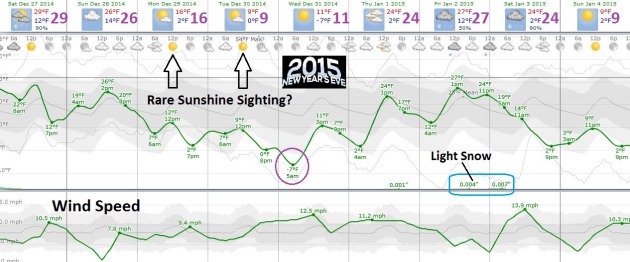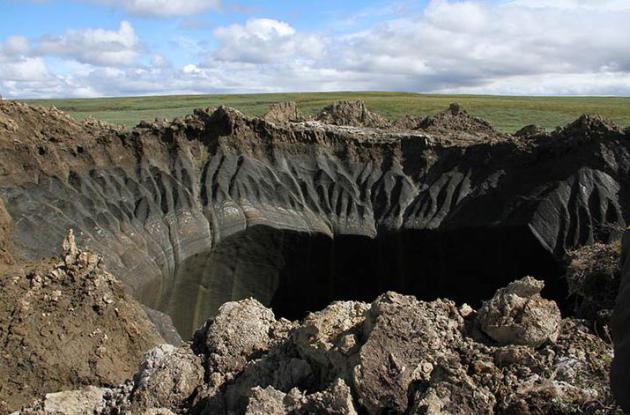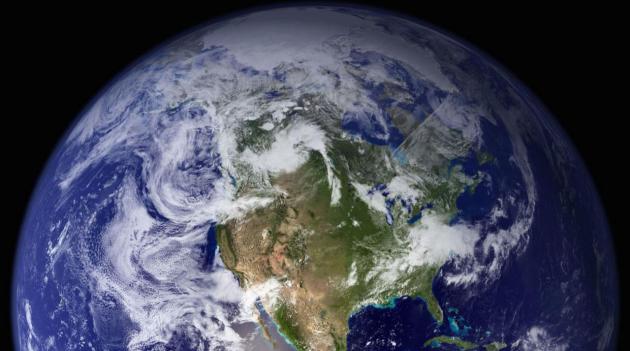32 F. high in the Twin Cities Friday.
25 F. average high on December 26.
26 F. high on December 26, 2013.
17 days with highs at or above 32F so far in December. December of 2013: 7 days of 32F+ highs.
6.8 F. December is running nearly 7F warmer than average as of December 26.
December 26, 1982: Snowstorm started across state and dumps 16 inches in the Twin Cities when it ended on the 28th.
Looks like December
Welcome to the biggest snowfall of December! Not hard to do, considering up until today only 1.4 inches of snow had fallen at MSP all month. That may explain the scowls on the faces of snow lovers, statewide.
Last winter nearly 70 inches of snow fell, each approaching swirl of subzero air setting off a new burst of snow. And that snow didn’t melt for the better part of 3 months!
Which brings up a question: do you prefer a gray El Nino winter of 30s, fog and scrappy clouds, or a Canadian winter: numbing sunshine, subzero air and frequent snowfalls?
Not that we have a choice in the matter, but I’m always intrigued by the tough choice between warmth and sunlight. Our coldest days tend to be sunny, but that’s a tough combination for many people.
The leading edge of colder air sets off a plowable snow this morning; heaviest amounts south/east of the Twin Cities. No worries getting home tomorrow, in fact the pattern won’t be ripe for another snowfall into the second week of January.
Like ocean waves breaking on the beach the cold surges southward in waves; a subzero low possible Wednesday morning, another surge of numbing air January 4-7. 20s return the second week of January with a shot at freezing. No extended polar pain in sight.
So far December is running nearly 2F warmer than November. We are very overdue for a correction.





Storm Responsible for Rare Christmas Tornadoes Caught By NASA, NOAA Satellites. Here’s a clip from a story at redOrbit: “…RapidScat spotted high winds in the Gulf of Mexico while Mississippi was experiencing tornadoes late Tuesday, and one image captured by the instrument showed winds travelling as fast as 67.1 miles per hour (30 meters per second) off the southeastern coast of Texas. As the storm system moved east early Wednesday morning, it detected sustained winds of approximately the same strength near south central Louisiana and in Alabama. In addition, NASA created animated footage of visible and infrared satellite data from the NOAA GOES-East satellite that showed how the severe weather system developed and moved…”

The Extreme Weather and Climate Events of 2014 in 13 Photos. Mashable takes a look at some of more head-scratching weather and climate stories of the year; including another unusually quiet tornado year for the USA; here’s a snippet: “…Overall, the 2014 tornado season was one of the least active in U.S. history, with less than 1,000 tornadoes touching down. This is below the average of 1,260 tornadoes that have occurred each year since the early 1950s. Interestingly, 2012 and 2013 were also unusually quiet tornado years, following deadly tornado outbreaks in 2011 that killed more than 500. Emerging scientific research shows that the frequency of tornadoes may be decreasing as the climate warms, while the timing of tornado season shifts, and big tornado outbreaks become more common...”

Watch How One NASA Satellite Has Changed How We See Earth In The 21st Century. NASA’s Terra satellite was launched in 1999 and had a 6 year life expectancy – it’s still going strong, one of a constellation of Earth-observing satellites. Details at Quartz: “…Measuring by levels of one pollutant, nitrogen dioxide, air quality in the US has improved due to emissions restrictions and technologies that decrease pollution. This image shows the decrease of nitrogen dioxide—especially in urban areas. One wonders what China’s nitrogen dioxide map might look like….”

Top Minnesota Weather Headlines of 2014. Pete Boulay and the folks at the Minnesota DNR have done an admirable job highlighting the top weather stories of this year. I too would put the “pioneer winter” at number 1, followed closely by the wettest June, statewide, in Minnesota history. It was the wettest month period. Here’s an excerpt of a very good post:
#2 Record Wet June
June 2014 was the wettest June and the wettest month of the modern record for Minnesota. The state-averaged monthly rainfall total for June was 8.03 inches. Redwood Falls and Glencoe had 14.24 inches. The Twin Cities saw 11.36 inches, which fell just short of the June record of 11.67 inches from 1874. The impacts were flooded roads, farm fields, soggy basements and construction delays. One side benefit to the wet June was once the summer began to turn dry, plants were able to tap deep soil moisture from the June rains.
#1 The Cold Winter of 2013-14
There were many note-worthy parts of the winter of 2013-14. There were 53 nights of at or below zero temperatures in the Twin Cities. This tied for 5th place for the number of times the mercury dipped at r below zero in the Twin Cities for winters going back to 1872-73. International Falls had 92 at or below zero readings, tied 1977-78 as the most ever. Another measure was the extremely cold wind chill temperatures. The coldest wind chill temperature was -48 at the Twin Cities on January 6th and for the state it was -63 degrees at the Grand Marais Airport. The winter of 2013-14 will be one to compare to for many years to come.


TODAY. Snow tapers. 2-4″ totals across much of the metro with slowly improving travel. High: 26
SATURDAY NIGHT: Patchy clouds, colder. Low: 16
SUNDAY: More clouds than sun, average temperatures. High: 25
MONDAY: Peeks of sun, feels like -5F. Wake-up: 6. High: 12
TUESDAY: Brisk sunshine, few extra layers. Wake-up: 1. High: 9
NEW YEAR’S EVE: Blue sky, stiff wind. Chill: -10. Wake-up: -2. High: 16
NEW YEAR’S DAY: Cloudy, flurries possible. Wake-up: 8. High: 24
FRIDAY: Still gray, seasonably cold. Wake-up: 12. High: 27
Climate Stories…

How Global Warming Could Turn Siberia Into A Giant Crater “Time Bomb”. Alarmist? I hope so, but what – exactly – is producing the rash of new craters in Siberian permafrost? Here’s a clip from The Siberian Times: “…Global warming could leave parts of Siberia exposed to a wave of underground explosions like those behind the recent unexplained giant craters phenomenon. Scientists studying one of the massive holes on the Yamal Peninsula say there is growing evidence that rising temperatures is the main catalyst triggering the blasts. They believe warming air is melting the thick permafrost, leading to the accumulation and release of volatile ‘fire ice’ gases which then explodes to create the giant funnels. Overall temperatures in Yamal, in northwest Siberia, in the past 14 years alone have risen by at least two degrees Celsius…”
Photo credit: “July 2014, the first scientific expedition has just returned from the site with first probes.” Pictures: Marya Zulinova, Yamal regional government’s press service.

Irreversible But Not Unstoppable: The Ghost of Climate Change Yet To Come. ThinkProgress has the post; here’s an excerpt: “…Delay is very risky and very, very expensive. As the International Energy Agency has explained, “on planned policies, rising fossil energy use will lead to irreversible and potentially catastrophic climate change.” “Delaying action is a false economy: for every $1 of investment in cleaner technology that is avoided in the power sector before 2020, an additional $4.30 would need to be spent after 2020 to compensate for the increased emissions.” Action now will save trillions and trillions of dollars….” (Image above: NASA’s Earth Observatory).

4 Signs The Arctic Is Getting Baked By Climate Change. Here’s an excerpt from a post at Mother Jones and billmoyers.com: “…The 2014 summer sea ice minimum — a snapshot taken when sea ice is at its lowest — was 23 percent below the 1981-2010 average, a loss of ice 2.6 times greater than the total area of California. In the map below, the minimum (which happened in September) is on the right; the pink outline shows the average. The winter maximum, on the left, was also below average, by about 5 percent...”
Graphic credit above: “Arctic sea ice extent in the winter maximum (left) and summer minimum (right) were both below average (pink line) in 2014.” (Graphic: NOAA).


